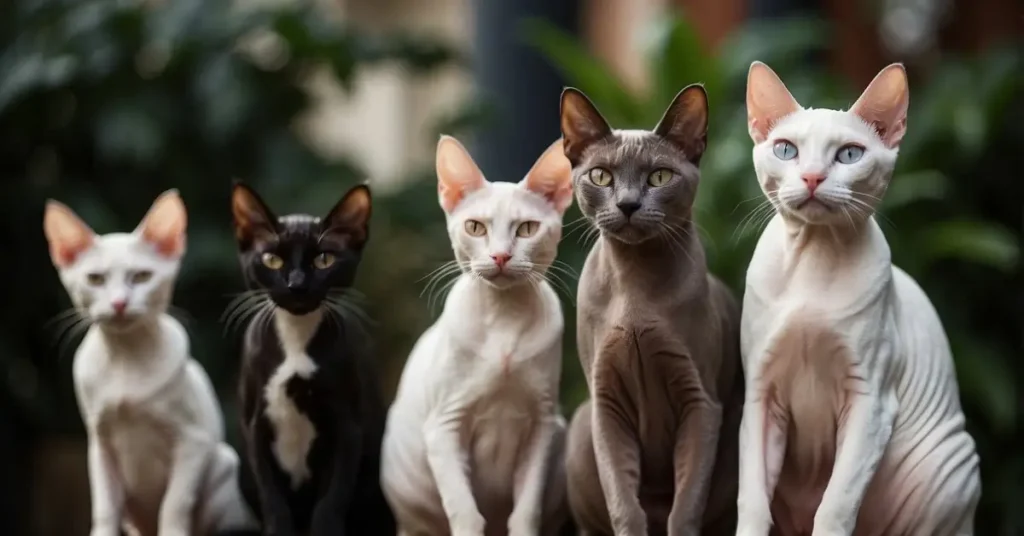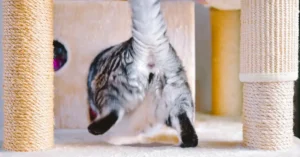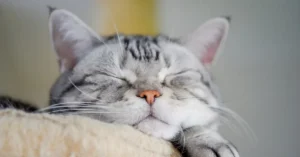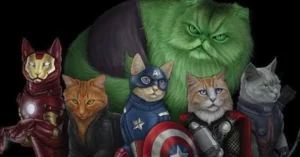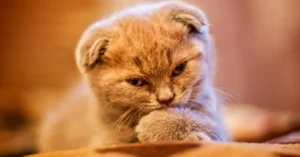When we consider bringing a new feline friend into our homes, hairless cat breeds often stand out among the myriad of choices. We find hairless cats to be highly affectionate companions, often seeking out human attention and displaying sociable behavior.
What draws us to hairless cat breeds isn’t just their unusual looks; it’s their charm. Behind those wide eyes and within those prominent ears lies an intelligent, loving personality that can make hairless cats as warm in character as they are to the touch.
Popular Hairless Cat Breeds
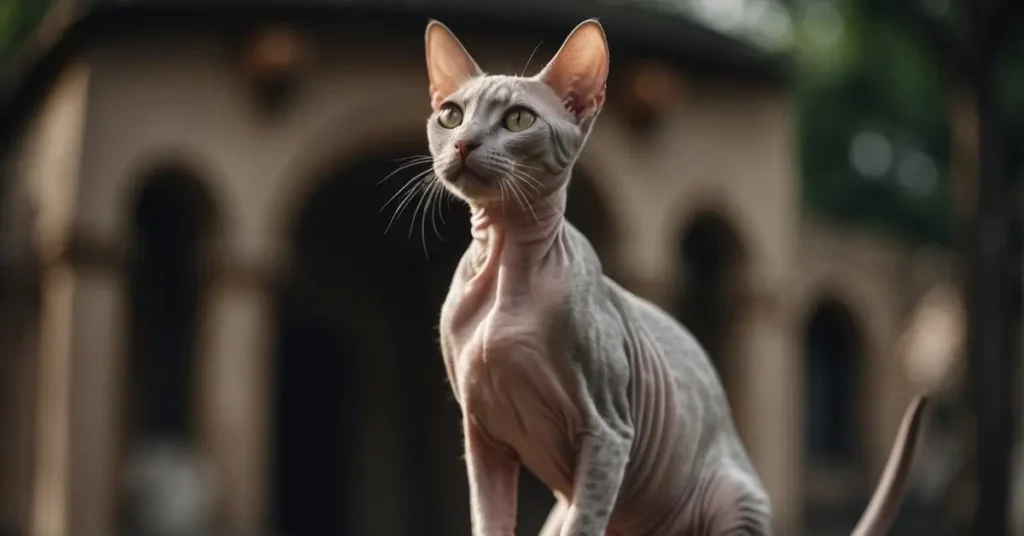
When we explore the intriguing world of the hairless cat breed, certain names stand out due to their distinctive appearance and personalities. Let’s meet some of the most popular breeds that fascinate cat enthusiasts everywhere.
Sphynx
The Sphynx is arguably the most recognizable hairless cat breed, known for its lack of a fur coat, muscular build, and friendly demeanor. Originating from Canada, this breed typically boasts a wrinkled skin and a curious, energetic nature.
Bambino
A cross between a Sphynx and a Munchkin cat led to the creation of the Bambino. This breed stands out for its short stature and hairless body, inheriting distinctive features like the Sphynx’s hairlessness and the Munchkin’s short legs.
Donskoy
The Donskoy, sometimes known as the Don Sphynx, is not related to the Sphynx but shares the hairless trait. Hailing from Russia, this breed exhibits a unique set of coats ranging from bald to a flocked, velour-like texture. The Donskoy is recognized for its muscular, medium-size build and wrinkled skin.
Peterbald
Another Russian breed, the Peterbald, often sports a hairless coat similar to the Donskoy. However, some may have varying degrees of hair, from a fine down to a brush-like quality. They are known for their elegant, slender bodies and affectionate nature.
Ukrainian Levkoy
Lastly, the Ukrainian Levkoy, a newer and less well-known breed, features distinct inward-folding ears and a sleek, hairless body. Although not as widely recognized as other breeds, the Ukrainian Levkoy has a playful and loving personality that endears it to those who meet this unique cat.
Physical Characteristics
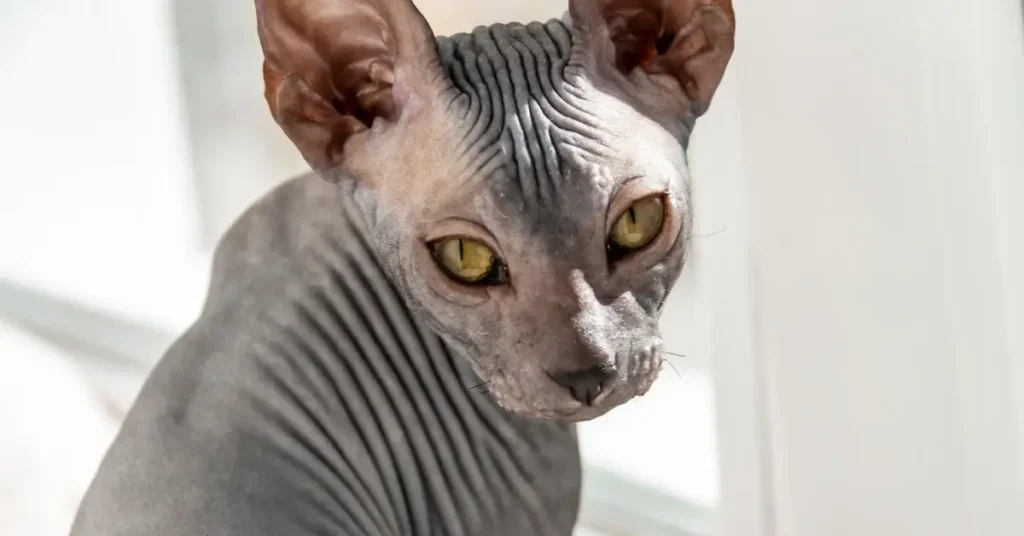
When we look at a hairless cat breed, its distinct lack of a fur coat immediately catches our eye. But there’s more to these unique pets than just their bald appearance.
Coat and Skin
Coat: While called “hairless,” these cats actually have a fine layer of downy fuzz, akin to a peach. This gives them a velvety texture that’s quite pleasant to touch.
Skin: The absence of a traditional coat means their skin is the star of the show. Hairless cat breeds require special skincare to protect against the sun and to manage oil buildup that a coat would usually absorb.
Ears and Eyes
Ears: Large and alert, the ears of a hairless cat breed are a defining feature. They contribute significantly to their overall appearance and require regular cleaning due to the increased exposure to dirt and debris.
Eyes: Their eyes are typically very expressive and can be any color. Since these breeds have little to no eyelashes, care must be taken to ensure their eyes are safe from potential irritants.
Body Shape
Hairless cat breeds often exhibit a slender, muscular build that’s quite athletic in nature.
Slender Build: The sleek, slim figure of a hairless cat breed accentuates the elegant lines of their body, from the wedge-shaped head to the tail.
Legs: They can have either short or long legs, which adds to the variety within these breeds and influences their agility and movement.
Care and Grooming
As fellow enthusiasts of the unique hairless cat breed, we understand that their care and grooming are quite distinct from that of their furry counterparts. Our hairless friends require specific attention to maintain their overall health and comfort. Let’s dive into the essentials of keeping these remarkable felines looking and feeling their best.
Skin Care
Hairless cats have exposed skin that is prone to skin problems such as acne and blackhead breakouts. To prevent these issues, grooming is key. We recommend wiping your cat’s skin with a soft, damp cloth to remove excess oils and prevent buildup. For active skin issues, a vet-recommended mild antibacterial soap can be used sparingly.
- Weekly Inspection: Check their skin for any irritation or unusual marks.
- Moisturizing: Consider a vet-approved moisturizer to prevent dryness.
Bathing
Despite lacking fur, hairless cats need regular baths to remove the oils that would normally be absorbed by fur. A routine bathing schedule is crucial, usually once a week.
- Temperature: Use warm, not hot, water to ensure comfort.
- Shampoo: Select a gentle, cat-specific shampoo and thoroughly rinse it off.
Temperature Management
The lack of a fur coat means that managing your hairless cat’s body heat is essential. They can become cold easily, so keeping your home warm is significant, and a sweater might be necessary in cooler climates. Conversely, these cats can be prone to sunburn, so applying a vet-recommended sunscreen is advised if they are exposed to direct sunlight.
- Warmth: Provide cozy bedding and consider a cat sweater for extra warmth.
- Sun Protection: Use cat-safe sunscreen especially in the summer months.
Health and Lifestyle
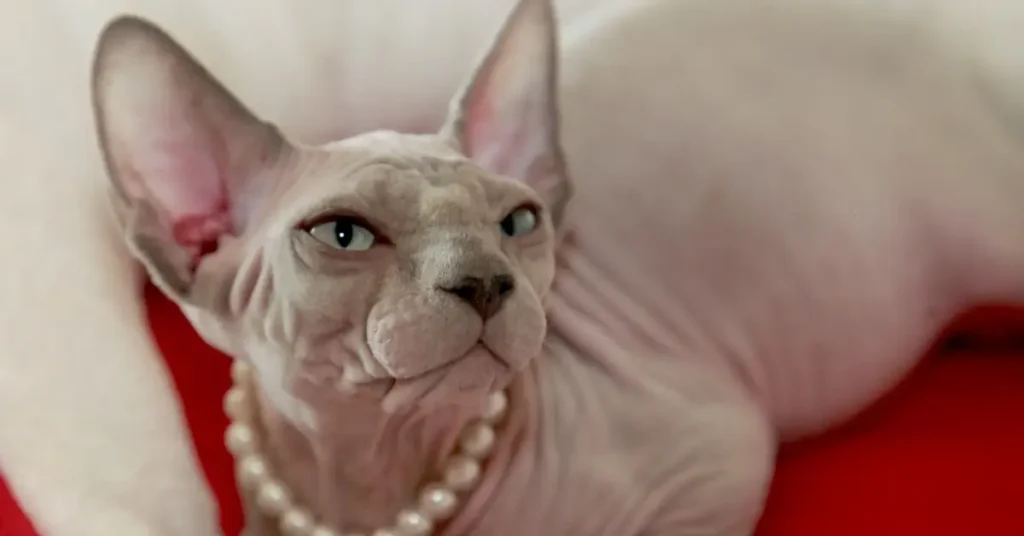
When we look at the unique hairless cat breed, we’re instantly drawn to its distinctive appearance. But beyond their striking looks, focusing on their health and lifestyle is essential. As these cats require special attention to maintain their well-being, understanding their dietary needs, potential health issues, and typical behaviors is crucial for any pet parent.
Diet and Nutrition
Hairless cats have high metabolisms, which means they need more protein in their diets to stay healthy. It’s important for us to feed them a balanced diet that’s rich in protein and ensure they maintain an optimal weight. Regular meals and healthy snacks are key to sustaining their energy levels.
- Recommended Diet:
- Protein-rich wet and dry food
- Healthy treats in moderation
- Fresh water always available
Common Health Issues
The lack of fur in hairless cat breeds makes them prone to certain skin issues, such as sensitivity to hot and cold temperatures. They also have a higher risk for dental problems like gingivitis. To mitigate these, we should maintain regular vet visits for early detection and management. Regular Vet Check-Ups can help identify potential health issues early on.
Preventive Measures:
- Moisturizing skin lotions recommended by a vet
- Warm clothing for cold environments
- Dental hygiene practices, like brushing
Behavior and Temperaments
Our hairless cat friends are known for their affectionate and social nature. They often display high energy levels and curiosity. Their intelligence also makes them quite trainable. But keep an ear out, as they can be quite vocal when seeking attention. We should make sure these clever cats have plenty of playtime and interaction to keep them happy and engaged.
- Behavioral Traits:
- Affection: Enjoy cuddles and company
- Social Interaction: Love being around humans and other pets
- High Energy: Energetic play and exploration
- Intelligence: Quick learners who respond well to positive reinforcement training
Despite their exotic looks, hairless cat breeds are not hypoallergenic as some might think, since allergens are mostly found in a cat’s dander and saliva. Therefore, we must consider this when it comes to our family and visitors who might be allergic. Understanding the health and lifestyle needs of these unique felines helps us provide the best care for our distinctive and loving pets.
Our Tips regarding hairless cat breeds
- Skin Care: Their sensitive skin requires protection from excessive sun exposure and cold temperatures. Consider using pet-safe sunscreen and warm clothing.
- Nutrition: High-quality diet is crucial. These cats have a higher metabolism, so ensure a balanced diet that meets their nutritional needs.
- Regular Bathing: Hairless cats, like Sphynx, need frequent baths to remove oil build-up on their skin. Use a gentle, cat-specific shampoo.
- Hydration: Always provide ample fresh water, as hairless cats can be prone to dehydration.
- Warm Environment: Keep your home warm, as these breeds lack fur for insulation. Cozy beds and blankets are great for comfort.
- Ear Cleaning: Without hair to protect their ears, regular cleaning is necessary to prevent wax build-up and infections.
- Social Interaction: Hairless cats are very social and thrive on human interaction. Spend quality time with them daily.
- Regular Vet Check-ups: Regular health check-ups are important to monitor for any skin issues or other health concerns specific to hairless breeds.
- Engaging Toys: Keep them mentally and physically stimulated with various toys and playtime.
- Companionship: Consider having another pet for company if you’re away often, as hairless cats do not like being alone for long periods.
History and Origin
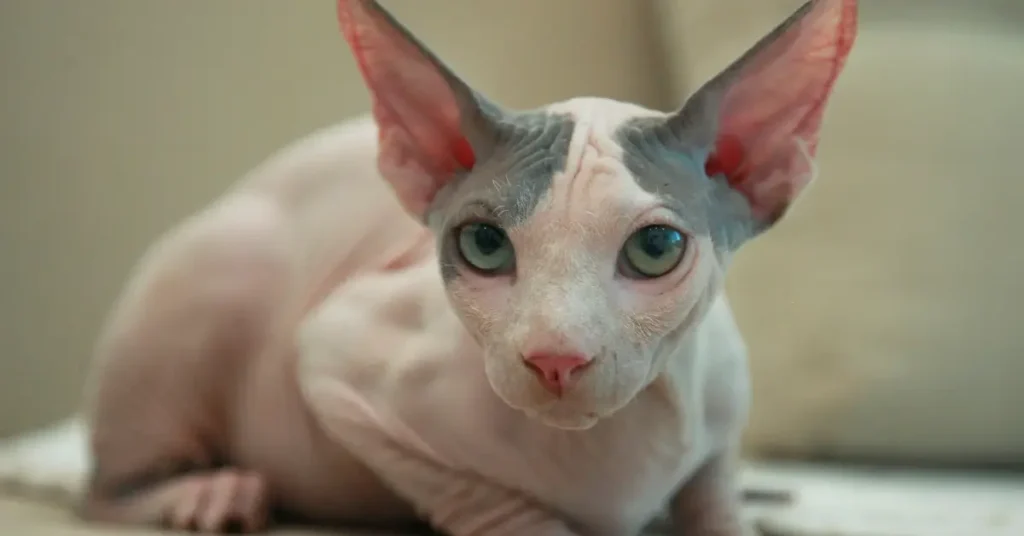
We’ve always been intrigued by the unique appeal of the hairless cat breed, which boasts a distinctive appearance unlike any other. It’s not just their bald charm that catches the eye—there’s a fascinating story behind their sleek skin, steeped in genetics and history that captivates cat enthusiasts around the world.
Genealogy and Genetics
The Sphynx cat stands out as the poster child of hairlessness in felines, characterized by its lack of a furry coat—a trait resulting from a natural genetic mutation. This mutation affects the gene responsible for hair growth, giving rise to the signature appearance of the breed. However, hairlessness in cats can also emerge spontaneously, which means other hairless breeds, like the Peterbald, Donskoy, and Ukrainian Levkoy, owe their sleek looks to similar genetic quirks.
- Natural Mutation: The gene mutation for hairlessness that can occur spontaneously.
- Selective Breeding: Intentional mating to produce hairless offspring, like with the Sphynx.
Notably, the Sphynx’s origin can be traced back to Canada in 1966, when a hairless kitten named Prune was born and subsequently propelled the development of the breed through selective breeding efforts.
Historical Breeds
Hairless cats are not just a product of modern breeding; they have historical precedence. The now extinct Mexican Hairless cats, which some speculate were owned by the Aztecs, possibly mark the earliest documentation of this trait in the Americas. Yet, despite their ancient origins, Sphynx cats as we know them today are quite new, with the breed only truly taking shape in the latter half of the 20th century.
- Historical Occurrence: Evidence suggests hairless cats were present in pre-Columbian times.
- Modern Development: The concerted breeding efforts that developed current hairless breeds began in the 1960s.
Our experiences with hairless cat breeds
Our journey with hairless cat breeds, particularly our beloved Sphynx, has been an enlightening and heartwarming experience. Initially, we were drawn to their unique, hairless appearance, which stood out as distinctly elegant and somewhat mystical. But soon, we discovered that their beauty is more than skin deep. These cats possess a warm and affectionate temperament that quickly made them an integral part of our family.
The warmth of their skin, reminiscent of a soft peach, became a source of comfort during cold nights. Their playful antics and curious nature never ceased to amuse and surprise us. They are incredibly social creatures, often following us around the house, participating in our daily activities with an almost dog-like loyalty. This strong desire for companionship means they don’t like being left alone for long periods, something we had to adapt to.
Caring for them, however, requires commitment. Their lack of fur means more attention to skin care, with regular baths to remove oil build-ups. It was a learning curve, understanding the right balance of care without harming their sensitive skin. We also learned about their need for a warmer environment, investing in cozy beds and blankets.
But beyond the care and adjustments, what truly stands out is their loving nature. Our Sphynx has shown us a level of affection and empathy that is deeply touching. They have an uncanny ability to sense moods and offer comfort. This emotional intelligence, combined with their striking looks and playful demeanor, makes the experience of living with a hairless cat truly unique and rewarding.
FAQ – Hairless Cat Breeds
Are Sphynx cats expensive?
Sphynx cats are indeed among the more expensive cat breeds, primarily due to their unique appearance and the cost of breeding. Prices can vary widely but typically range from around $1,500 to $3,000, sometimes even higher, depending on factors like lineage, location, and the breeder’s reputation. This high cost often includes health checks, vaccinations, and breeder support.
Are Sphynx cats born bald?
Sphynx cats are not entirely bald at birth; they are born with a fine layer of downy fur that gives them a suede-like texture. This minimal fur can be more noticeable in some kittens than others. As they mature, Sphynx cats generally retain this very fine coat, contributing to their distinctive appearance.
Are hairless cats aggressive?
Hairless cats, such as the Sphynx, are generally not aggressive by nature. They are known for their affectionate and friendly demeanor, often seeking attention and interaction from their human companions. Like any cat, their behavior can vary based on individual personality and upbringing.
Are you interested in different cat breeds? Then you might also be interested in our article on the strongest cat species or the biggest house cat breeds.
What are your experiences with hairless cat breeds? Let us know in the comments!

